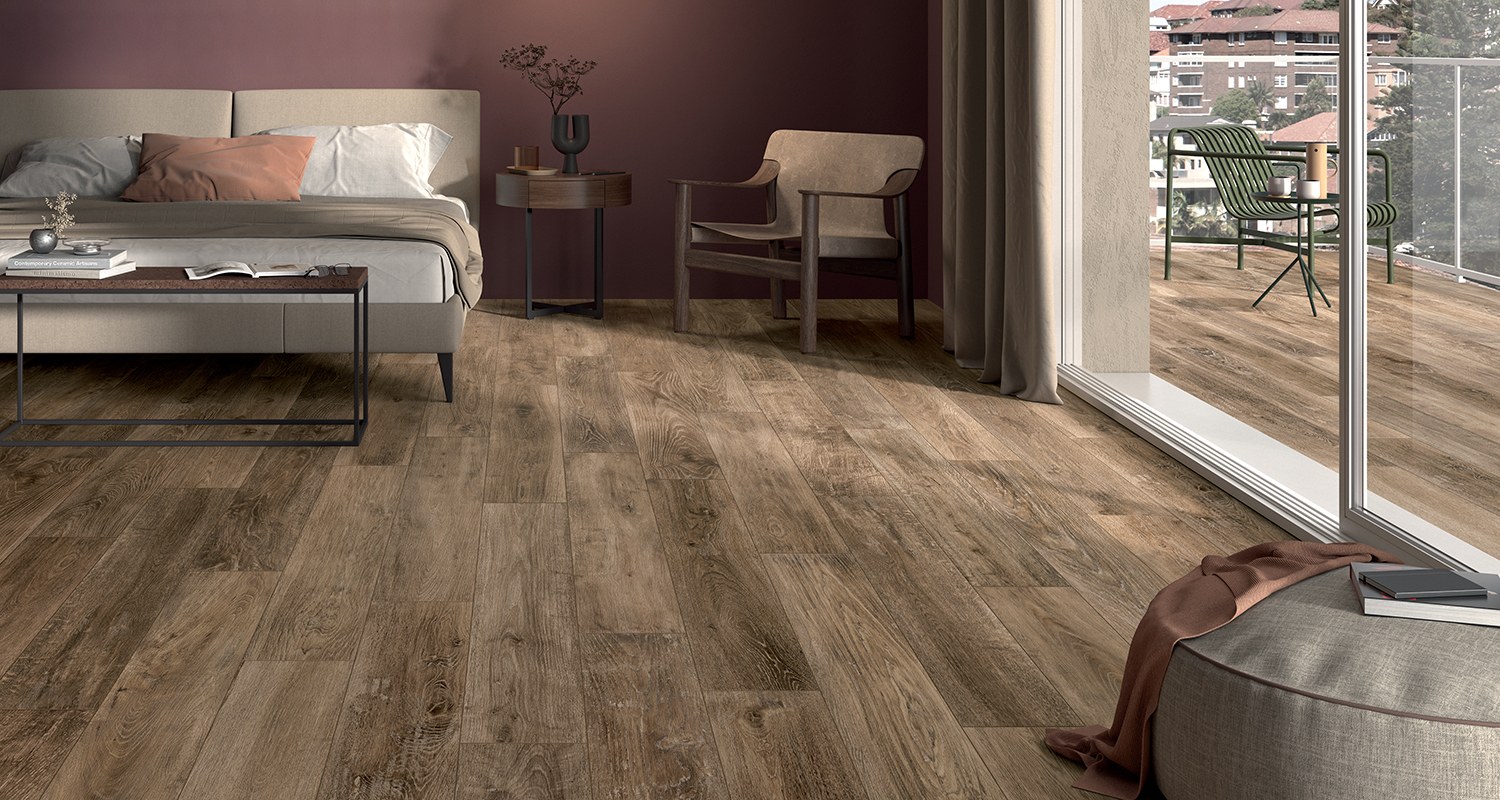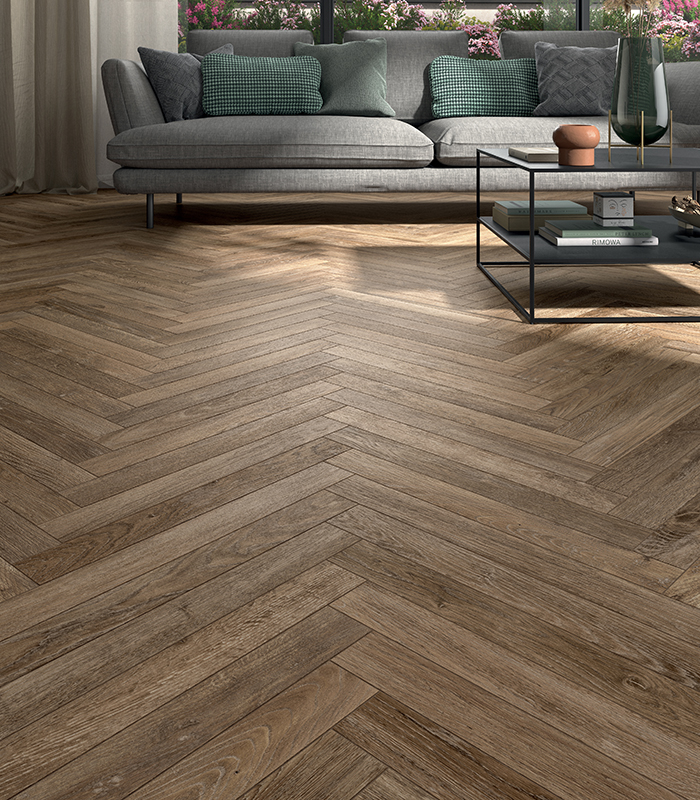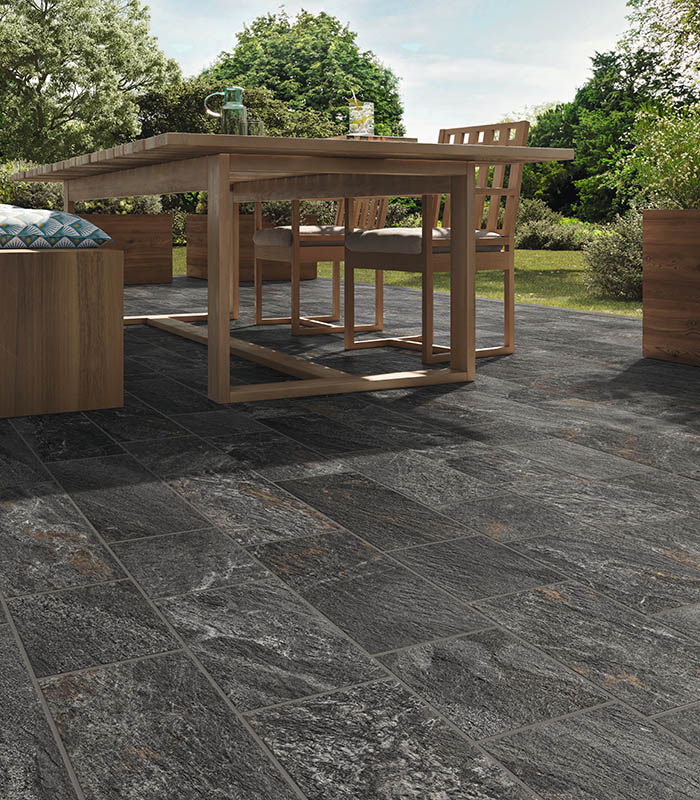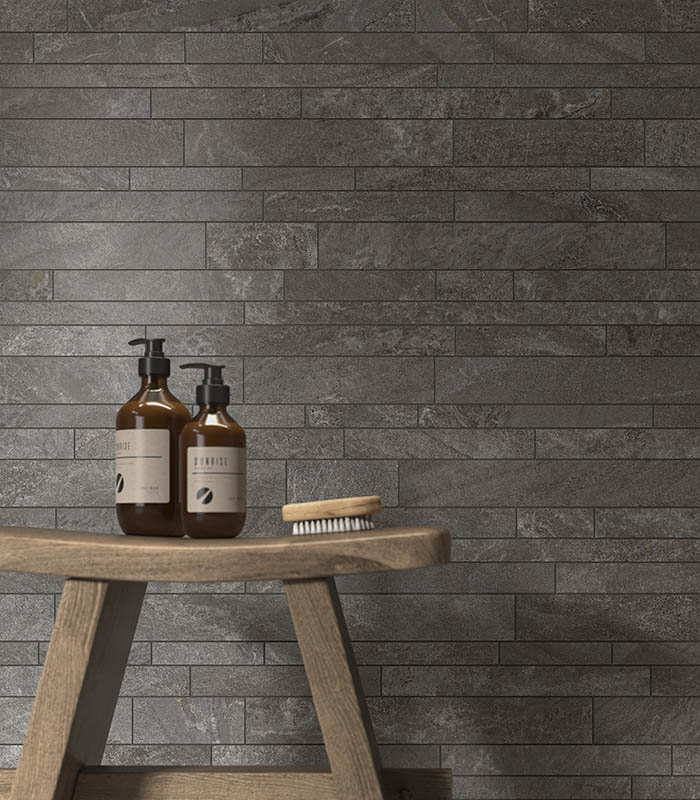Staggered Layout
Tiles (usually wood-effect planks here as well) are staggered in parallel rows along their length, without a recognizable rhythm. It is a practical, informal pattern widely used in modern interiors, especially in long and narrow spaces. The staggered layout with wood-effect porcelain stoneware is particularly appreciated because it is dynamic and looks very natural. Ceramic planks can also have different lengths, which adds even more movement to this pattern.
Herringbone Layout
In this pattern, the tiles are arranged at right angles, creating a “V” shape. Refined and striking, it is recommended for elongated rectangular formats. A herringbone floor is ideal for representative settings or living areas, often the largest room in the house. Classic and elegant, wood-effect porcelain stoneware in herringbone highlights the veining and tonal variations of the ceramic material. Its constant change of direction creates a decisive yet harmonious dynamism.
Chevron Layout
This pattern is similar to herringbone, but with tiles cut at 45° at both ends, joining together to form a regular zigzag design. Compared to herringbone, the chevron layout is even more elegant (because more regular) and highly decorative, which explains its growing popularity.









